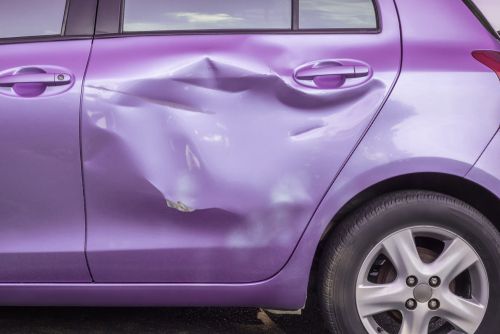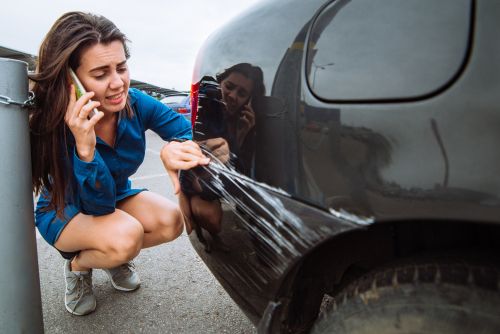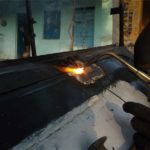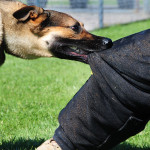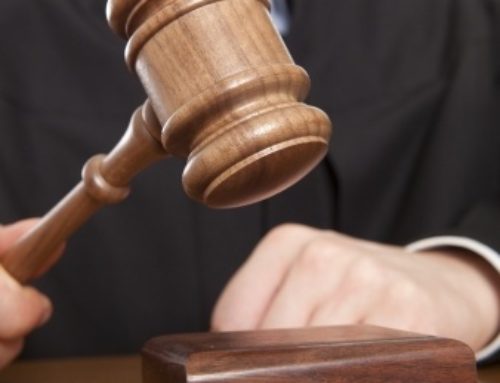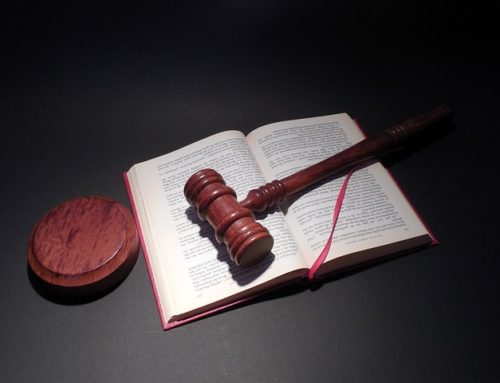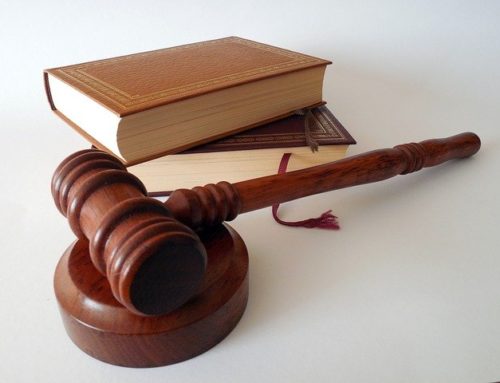If you have been the victim of a hit and run, you may feel even more frustrated and angry than if you had been involved in a more straightforward accident. Hit and run crashes aren’t just a costly nuisance. According to the AAA Foundation for Traffic Safety, there were 1,980 fatal hit-and-run crashes in the United States, resulting in over 2,000 deaths.
Consider yourself lucky if you’ve never been involved in a hit and run incident. However, if you have recently been involved in a hit and run, either as the victim or the perpetrator or if this happens to you in the future, here are the steps you should take to deal with the situation.
If You Are the Perpetrator
If you are the driver in an accident where you hit someone else, either in their vehicle or as a pedestrian, leaving the scene automatically increases the seriousness of the offense. This includes hitting a parked vehicle without any occupants.
If no one is in the vehicle, you are still required to leave a note with your contact and insurance information. If you leave an occupied vehicle or a pedestrian after hitting them, you have also broken the law.
Have you recently hit someone and fled the scene? The best solution is to come clean. Hire a lawyer, and then turn yourself in, which may afford you some leniency with law enforcement. It’s possible the other party was at fault, and in the shock of the moment, you left the scene of the accident.
Turning yourself in shows that with a clearer head you want to do the right thing. It helps victims who may need compensation from your insurance. It also alleviates some of the emotional pressure for victims who may feel they have been doubly violated by your fleeing the scene after they experienced injury or damage in an accident.
If You Are a Driver Hit by Another Driver
If you are hit by a fleeing driver while driving your vehicle, your first concern should be for your own safety. If possible, turn your hazard lights on, and pull your vehicle over to the side of the road where it won’t impede traffic.
Call 911 and ask for police response, as well as an ambulance if you have been injured. Even if you think you are okay, if the impact was significant, you may want to get medical attention. You could be in shock, which can mask pain and symptoms of serious injuries, such as broken bones or internal bleeding.
While you wait for emergency responders, try to remember everything about the vehicle that hit you, writing it down or dictating it into your phone, if you are able. The person who answers your 911 call may also ask for this information, hoping to get it while it’s fresh in your mind so that the police can look for the other vehicle. Things to think about:
- What was the color of the other vehicle?
- Did you recognize the make and model of the vehicle?
- Can you at minimum say whether it was a truck, van, SUV, or sedan?
- Were you able to remember any of the license plate digits on the other vehicle?
- What did the driver of the other vehicle look like?
- Did the other driver say anything to you?
- Were there passengers in the vehicle that hit you?
- Was there anything else significant about the accident (an animal in the road, another vehicle that could have affected the other driver’s actions, etc.)?
- Were there any witnesses to the accident?
- In what direction did the other vehicle flee?
If at all possible, try to keep any witnesses to your accident on the scene until police arrive to get their account of what happened. If they must leave, ask if they will leave their contact information for the police.
The police will want to talk to witnesses, as well as examine your car and the area for any evidence, such as paint markings or broken pieces of their vehicle remaining on the scene. Sometimes, they can trace a headlight or similar automotive part to a particular make or model of vehicle, which can narrow down suspects in a hit and run once they look for matching registered vehicles in the area. Police are more likely to conduct this kind of thorough search if there were injured parties in the accident.
Police officers who follow up with your case may also ask people who live or work in the area if they saw anything if there are houses or businesses nearby. They will also check to see if any traffic or security cameras recorded the accident.
Once you have filed a police report, contact your insurance carrier and report the accident. Depending on your insurance plan, you may be covered for damages to your vehicle and bodily injuries. Uninsured motorist property damage coverage (AKA UMPD), no-fault insurance, or collision insurance usually covers hit-and-run incidents; however, UMPD is not available in every state. You may still have to pay the deductible, which may be reimbursed if the perpetrator of the accident who fled is ever found.
Both the police and the insurance company will want to take photographs of your car and possibly of the accident scene. It is also perfectly fine for you to take your own photographs for your records.
Depending on your insurance carrier’s instructions, you may be asked to stay put at the scene until they can get there too, or you may be told to bring your car to a garage or have it towed there if it is not drivable. If you or a law enforcement officer feel it is unsafe to drive your car, or if you are too shaken up to drive, ask to have the vehicle towed, and get a lift from the tow truck driver, a friend, or a family member. Reasons your car may not be drivable include:
- Can’t open doors or windows
- Windshield smashed
- Airbag deployed
- Headlight(s) broken
- Steering or alignment is off
- Engine won’t start or run properly
- Bumper or other parts dragging
- Tire(s) flat or otherwise damaged
- Horn beeping continuously
If You Are a Pedestrian Hit by a Driver
If you are on foot and hit by a driver who flees the scene, follow these steps:
- Always put your own safety first. If you cannot move, stay put, and ask bystanders for help, including calling 911 for police and an ambulance.
- If you are in a precarious location with traffic bearing down on you, it is usually best to move to the side of the road, even if you are injured. Ask bystanders for help if possible.
- Even if your injuries appear minor or if you think you weren’t hurt at all, sit down and ask for an ambulance along with police response. You could be in shock, which could make you lightheaded or mask more serious injuries. Let the EMTs who respond check your vital signs and do a quick trauma assessment, especially if you are bleeding or have hit your head or spine. If they recommend being transported to a hospital for further care, it’s best to go with them. If you are found to have more serious injuries, and if the hit-and-run driver is caught, you will want to have your case documented for legal follow up.
- Once the police arrive, follow the steps above regarding giving them whatever information you can remember about the vehicle that hit you. Just like in a vehicle-on-vehicle hit and run, they will ask witnesses for their account of the incident and see if there are any cameras in the area that recorded the accident.
If You Are Given False Information
Sadly, there are people who give false identification and insurance information at crash scenes, making the incident the equivalent of a hit and run in the long term. Follow the steps above for a regular hit and run. Keep any information you were given, as it’s possible the police would want to build a fraud case against the perpetrator if they are caught. Why do people give false information or flee the scene of an accident?
- They are uninsured or underinsured.
- They are afraid their insurance rates will go up.
- They are under the influence or have open liquor or illegal drugs in their vehicle and therefore don’t want the police involved at the scene.
- They are driving without a license or on an expired license.
- They already have previous driving offenses that could cause the loss of their license.
- They are afraid of going to jail.
- They are undocumented residents of the US.
- They are driving someone else’s car, and the owner would be upset or possibly liable.
- Their vehicle has an expired registration.
- They are driving a stolen vehicle.
- They are in a hurry to get to their destination, which they prioritize over proper accident protocol and transportation laws.
- They are in shock after the accident, resulting in poor judgment.
If you are involved in an accident, try to get the other driver to show you their driver license and official insurance card. Rather than writing the information down, snap a picture of it, if possible, with your mobile phone. This eliminates the possibility of human error. Give the other driver your information as well, in a show of good faith.
If You Are Hit While Parked
Sometimes hit-and-run accidents happen while you are parked and away from your vehicle. Depending on the severity of the damage, where it occurred, and how busy they are, the police may or may not respond to the scene. While you may want to take your own photographs of the scene anyway, it is especially imperative if there are no police to view the accident site.
If the police are too involved with emergency calls to respond to your hit-and-run, file a police report at the police station or at your home (some departments will send officers after the fact to collect a report when they have sufficient manpower).
Ask people in the area, including nearby homes or businesses, if they saw anything. Look around for any security or traffic cameras that might have caught the incident on video. Examine your car for evidence, like chipped paint from the other vehicle, which might lead to discovering who hit your vehicle.
Follow up with your insurance company as instructed above, being aware that you may have to foot the bill for any damages not covered by your insurance. Let this be your motivation to file a police report since if the person who hit you is caught or comes forward, they will be responsible for paying the damages, either through their insurance or out of pocket.
If You Need Legal Assistance
If you are the victim of a hit-and-run crash in any of the scenarios described above, and if the person who hit you is caught, you may wish to retain an attorney who specializes in this kind of case, including both accidents and personal injury. You may be eligible for both compensation and punitive damages.
Compensation covers damage to your vehicle you had to pay for, as well as any loss of property and out-of-pocket medical expenses. Punitive damages are related to the morality of the perpetrator leaving the scene of the accident and are intended to both punish the perpetrator and prevent future behavior of that kind, while also serving as a deterrent to others. Additionally, hit-and-run cases may be tried in both civil and criminal court, depending on the case, with a criminal conviction possibly resulting in loss of driving privileges or even a prison sentence.
Having an expert attorney to guide you through the legal system can be of huge benefit in pursuing hit-and-run cases, especially if you are filing a suit for a deceased loved one. Motorcycle hit-and-run accidents, for example, often result in a higher rate of fatalities.
Contact Ingerman & Horwitz to learn more about your rights as the victim of a hit and run. We specialize in personal injury and have over 50 professionals on staff to assist you in getting what you deserve after a hit-and-run crash. Experiencing an accident is stressful enough. Put closure to your pain and recover financial losses by calling us today.


